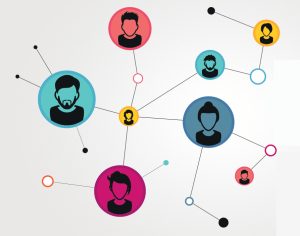Networking is an essential element of success in the world of business. It serves as a bridge to opportunities, knowledge and professional growth. However, men and women often approach networking differently, influenced by social and cultural factors. Men and women also have different styles of communication.
In this article, I explore the distinct ways in which men and women undertake the art of networking, along with the implications of these differences.
Communication styles
Direct v Indirect
Men tend to employ direct communication when networking, clearly stating their objectives and expectations. In contrast, women often employ indirect communication, focusing on building a rapport and forming personal connections before discussing business matters. This difference can influence the initial approach and overall tone of a networking meeting.
Listening v Talking
Studies have shown that women tend to be more active listeners during networking interactions. They ask questions, seek to understand the perspectives of others and prioritise on building relationships. Men, on the other hand, are more likely to self-promote which can lead to different networking outcomes.
Networking Objectives
Transaction v Relationship
Men often view networking through a transactional lens. They seek immediate results such as deals, contracts or job offers. In contrast, women may prioritise the building of long-term relationships as their primary networking objective. Women believe that by developing strong relationships, this will naturally lead to opportunities in the future.
Mentorship and support
Women are more likely to seek out mentorship and supportive relationships in their networks. They value guidance, personal development and emotional support. This can result in more robust support systems.
Networking environments
Professional organisations
Men tend to dominate formal, professional organisations and industry-specific events. This can affect the dynamics of networking opportunities and limit women’s access to influential networks.
Informal gatherings
Women often excel during informal, relationship-focused gatherings such as networking breakfasts, social events and small-group discussions. In these settings, they can build connections and share insights more comfortably.
Networking challenges
Implicit bias
Gender bias can affect how men and women are perceived during networking sessions. Women may encounter scepticism about their professional capabilities. They are also often viewed as being less assertive, which potentially affects their access to resources and opportunities.
Stereotypes
Stereotypes can influence networking interactions. Men may experience pressure to conform to traditional masculine norms of assertiveness, while women may be expected to adopt a more nurturing and empathising tone.
Exclusion
In some cases, women may be excluded from male-dominated networks or subjected to the dynamics of ‘the old boys’ club’. This will limit their access to influential contacts and opportunities.
The Importance of gender-inclusive networking
Only by recognising differences in networking behaviour, can we start to foster a more inclusive business environment. Here are some key considerations:
Diverse networks
Businesses and organisations benefit from diverse networks that bring together individuals with varying communication styles, perspectives and networking goals.
Mentorship and sponsorship
By encouraging mentorship and sponsorship programs, this will help to bridge gender-based networking gaps. These initiatives can provide women with access to valuable guidance and advocacy.
Training and awareness
Raising awareness about gender bias, and providing training on inclusive networking practices, can help individuals and organisations to create a more equitable networking environment.
Inclusive events
Hosting inclusive networking events that cater to diverse styles and preferences can encourage participation from a broader range of individuals.
Conclusion
There is clear evidence that men and women network differently in business, and that these differences are influenced by various factors. Recognising and embracing these differences is crucial for creating more inclusive networking opportunities. Businesses need to acknowledge the various strengths and approaches which men and women bring to the table.
Only then can businesses and organisations fully harness the power of diverse networks. This will help to foster meaningful relationships, and drive collective success in the world of business. Ultimately, it is through inclusive networking that we can unlock the full potential of individuals, regardless of gender.
Share via:








































